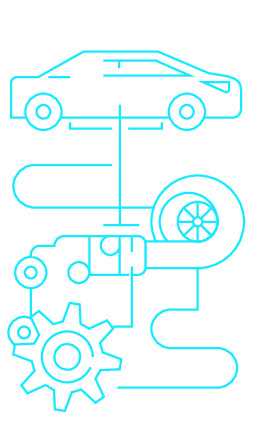|
|
|
| Module code: FT09.1 |
|
|
2V+2U (4 hours per week) |
|
4 |
| Semester: 2 |
| Mandatory course: yes |
Language of instruction:
German |
Assessment:
Written exam 90 min.
[updated 30.09.2020]
|
FT09.1 (P242-0089) Automotive Engineering, Bachelor, ASPO 01.10.2015
, semester 2, mandatory course
FT09.1 (P242-0089) Automotive Engineering, Bachelor, ASPO 01.04.2016
, semester 2, mandatory course
FT09.1 (P242-0089) Automotive Engineering, Bachelor, ASPO 01.10.2019
, semester 2, mandatory course
|
60 class hours (= 45 clock hours) over a 15-week period.
The total student study time is 120 hours (equivalent to 4 ECTS credits).
There are therefore 75 hours available for class preparation and follow-up work and exam preparation.
|
Recommended prerequisites (modules):
FT04.3 Engineering Mechanics I
[updated 12.07.2015]
|
Recommended as prerequisite for:
FT16.1 Vehicle Superstructures and Lightweight Construction
FT19.1 Passive Vehicle Safety
FT20 Electric Vehicle Drive Systems
FT26.1 Project Work 1
[updated 21.08.2015]
|
Module coordinator:
Prof. Dr.-Ing. Jochen Gessat |
Lecturer:
Prof. Dr.-Ing. Jochen Gessat
[updated 12.07.2015]
|
Learning outcomes:
After successfully completing this course, students will be able to specify the conditions for uniform, uniformly accelerated motions and convert them into kinematic diagrams. In this context, they will be able to integrate/differentiate functions taking into account the initial conditions and convert results for accelerations, velocities and distances into other units.
Students will be able to explain the terms translation, rotation and general motion of a rigid body. They will be able to apply the Euler equation for velocity and acceleration on plane cases.
They will be able to calculate mass moments of inertia and relate them to different axes.
Students will be able to explain D´Alembert´s principle.
They will be able to apply the laws between states of motion and resulting loads on rigid bodies.
Students will be able to mathematically describe and analyze basic forms of simple mechanical vibrations.
[updated 30.09.2020]
|
Module content:
1. Kinematics of a point particle
2. Kinematics of a rigid body
3. Kinematics of mass point
4. Kinetics of rigid bodies
5. Mechanical oscillations
[updated 30.09.2020]
|
Recommended or required reading:
[still undocumented]
|


